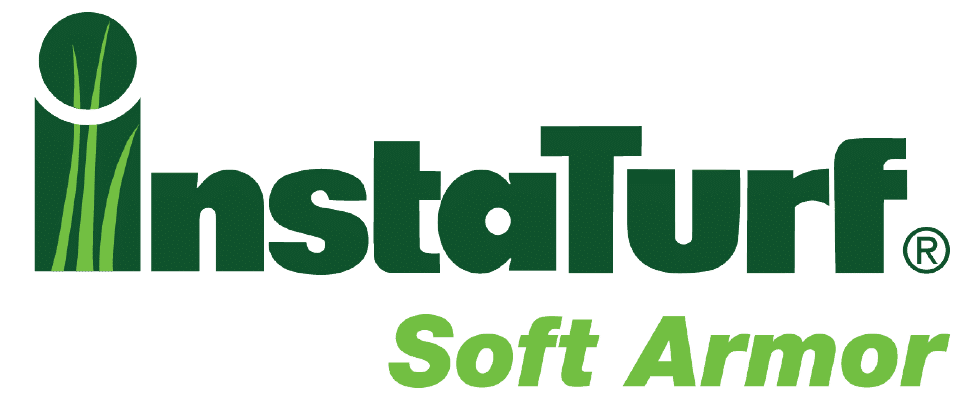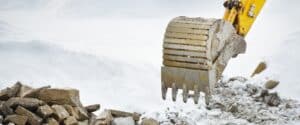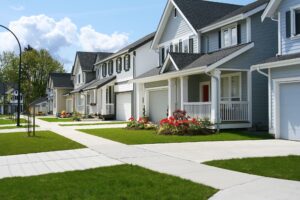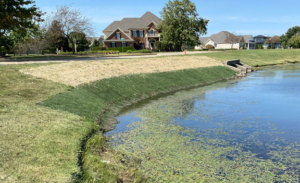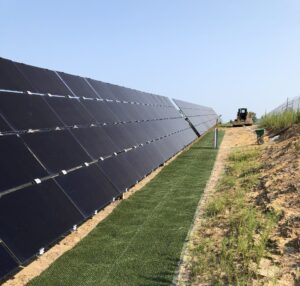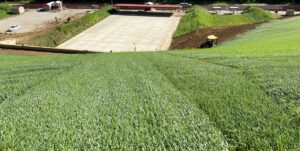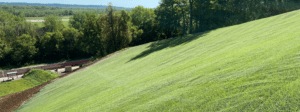In the past, when it came to selecting materials for erosion protection and sediment control on project sites, some designers and contractors tried to skimp by on the cheapest products available that would appease the pertinent regulatory agencies. However, with the more frequent, higher intensity storm events we face today necessitating more robust erosion protection, and ever-increasing fines being delved out for excess sediment discharge under the EPA’s National Pollutant Discharge Elimination System (NPDES), people are realizing the importance of using the most cost-effective erosion control materials for their projects.
The first step in choosing the most cost-effective option for soil erosion protection is knowing what types of erosion control materials are available on the market. Among these, we can include hard armor solutions in the form of concrete or rock riprap, hydraulic erosion control products (HECPs), rolled erosion control products (RECPs), and Sediment Retention Fiber Rolls (SRFRs). Each of these types of products has its own purpose, benefits, and limitations. This means that the cheapest option may not always translate to the most cost-effective solution for any given project application.
The Different Types of RECPs
First introduced back in the 1950s in the form of imported jute mats and domestically-produced wood excelsior fiber blankets, rolled erosion control products (RECPs) have evolved significantly over the years. Today, these types of materials are one of the fastest-growing segments in the erosion control industry.
As their name would suggest, RECPs are erosion control products manufactured and supplied in roll-form. These products are made from a variety of degradable and/or non-degradable synthetic fibers, filaments, nettings or monolithic structures and rolled onto a soil surface in order to provide erosion protection and facilitate vegetation establishment. RECPs are further classified as either temporary or permanent products. Open Weave Textiles (OWT), Erosion Control Blankets (ECB), and Mulch Control Nets (MCN) are temporary RECPs, whereas turf reinforcement mats (TRMs) are considered permanent RECPs. Temporary RECPs are made from photo-degradable and/or biodegradable components designed to decompose in as little as a few months up to a few years, leaving established vegetation as the sole permanent erosion protection. TRMs, on the other hand, are primarily made with non-degradable synthetic components to resist weathering and decomposition over many years, in order to provide both temporary erosion control and long-term turf protection and reinforcement. TRMs actually increase the erosion resistance of vegetation and enable its use in place of hard armor materials such as rock riprap, for protecting high flow channels, shorelines, riverbanks, and outfall areas. One primary benefit of using TRM-reinforced vegetation in place of rock riprap is TRMs typically cost less than rock to install and maintain.
Using TRM-Reinforced Vegetation vs. Rock Riprap
Hard armor erosion control materials in the form of poured concrete, tied concrete block mats, articulated concrete blocks or rock riprap have traditionally been used to prevent soil erosion on slopes, streambanks, drainage channels, and other such highly erodible areas. Rock riprap is the most popular of all the hard armor materials due to its comparatively low-cost, wide-spread availability, and long history of use. Though rock is typically cheaper than other hard armor materials, soft armor materials such as TRMs typically have even lower material, installation and maintenance costs. Hence, TRMs are a cost-effective armoring alternative worth considering for high flow areas.
That said, most conventional TRMs and High Performance TRMs (HPTRMs) do not provide a high level of erosion protection until after they become well vegetated.. To alleviate the potential for erosion problems during this vulnerable period, the new InstaTurf erosion control/turf reinforcement mats, recently introduced by GrassWorx LLC, are designed to provide immediate, unvegetated erosion protection similar to large rock riprap. The InstaTurf ShearForce 10 EC-TRM and ShearForce 12 scour control products utilize a unique simulated turf structure to form a hybrid vegetative armoring system, with synthetic turf protecting, establishing and permanently reinforcing natural vegetation. These innovative products are capable of delivering better protection than 24-inch rock riprap from day one of installation, before any vegetation growth. Once vegetation is established, the erosion resistance of the hybrid system will exceed that of 36-inch rock. With the increased frequency of severe storms dumping large volumes of water onto steep slopes and into drainage channels, rivers, and lakes, the immediate rock-like armoring capability of the InstaTurf products has become more important than ever before.
Short- and Long-Term Cost Benefits of TRM-Reinforced Vegetation
In general, turf reinforcement mats are used in locations where vegetation, by itself, cannot withstand the intense shear stress and velocities of expected water flows. It’s also used instead of concrete or rock riprap whenever these materials are not visually appealing or where a more environmentally-friendly, “soft armor” solution is desirable. Many people also prefer TRMs simply as a more cost-effective alternative to rock riprap and other hard armor solutions.
Though rock riprap is often considered a “quick-fix” for stabilizing areas subject to high water flows, it is typically more expensive to install than TRMs. In general, the average installed cost of riprap is from $30 to $65 per square yard, and sometimes much more, depending on rock size, transportation costs from the stone quarry, and other project specifics. By comparison, TRMs typically cost between $6 – $22 installed, depending on the type of TRM used and installation details. One of the main reasons for the significant cost difference between rock and TRMs is all the site preparation that goes into a riprap project. Heavy machinery is needed for excavation and stone placement, alongside large dump trucks for transportation. The need for heavy equipment can also be an issue for projects with limited site access, including remote areas, or areas where large trucks are not welcome, such as established neighborhoods and commercial developments. By comparison, a typical TRM installation is performed manually, requiring no heavy equipment, though light soil preparation and seeding equipment is often used before matting placement.
As for long-term cost benefits, it’s important to keep in mind that rock riprap, though considered a “non-vegetative” solution, will eventually vegetate, often with weeds and other undesirable plants growing up through voids in the rock bed. This can become a real maintenance issue, especially on well-manicured residential and commercial development sites. Since rock can’t be safely mowed over, the unwanted vegetation must be controlled manually, either by spraying, weed-eating or pulling. Furthermore, rock riprap is often used adjacent to lawn areas, necessitating extra caution when mowing along the rock beds. These edges are also often managed “manually” to keep mowers a safe distance from the rock.
TRM’s Minimal Maintenance
Properly selected and installed TRMs usually require very little special maintenance, particularly after the vegetation is established. Once established, the vegetation growing up through the TRM can readily be mowed over with standard equipment. That said, if a stitched and netted TRM is used, it’s important to make sure none of the threads become loose and exposed as they can be caught in mower blades. This is not an issue for monolithic-structured TRMs, such as the ShearForce10, which have no threads to potentially unravel.
To determine if erosion control systems are functioning properly or need maintenance repairs, both hard armor and TRM systems should be inspected after large storm events and periodically for localized issues which could lead to more serious catastrophic system failures. Riprap should be checked for loose and displaced stones, slumping, and erosion along the edges of the rock bed. Any issues noted should be repaired as necessary.
TRMs should be checked for material integrity as well as any rills and soil/seed migration that may have occurred beneath the mat, especially before vegetation establishment, when most vulnerable. Any areas with erosion substantial enough to hinder vegetation establishment must be repaired, typically by removing the mat, back-filling and compacting the soil, applying seed and re-installing the mat. Note that using TRMs which provide maximum pre-vegetated erosion protection, such as the ShearForce10 EC-TRM, can often eliminate the need for such costly repairs.
To summarize, properly selected and installed turf reinforcement mats can offer a more cost-effective, environmentally-friendly alternative to rock riprap and other hard armor systems. If you’re interested in using more vegetation and less hard armor materials on your projects, but don’t want the initial risk associated with conventional TRMs, then you should seriously consider the InstaTurf ShearForce products. Visit www.insta-turf.com for more information or contact us directly.
